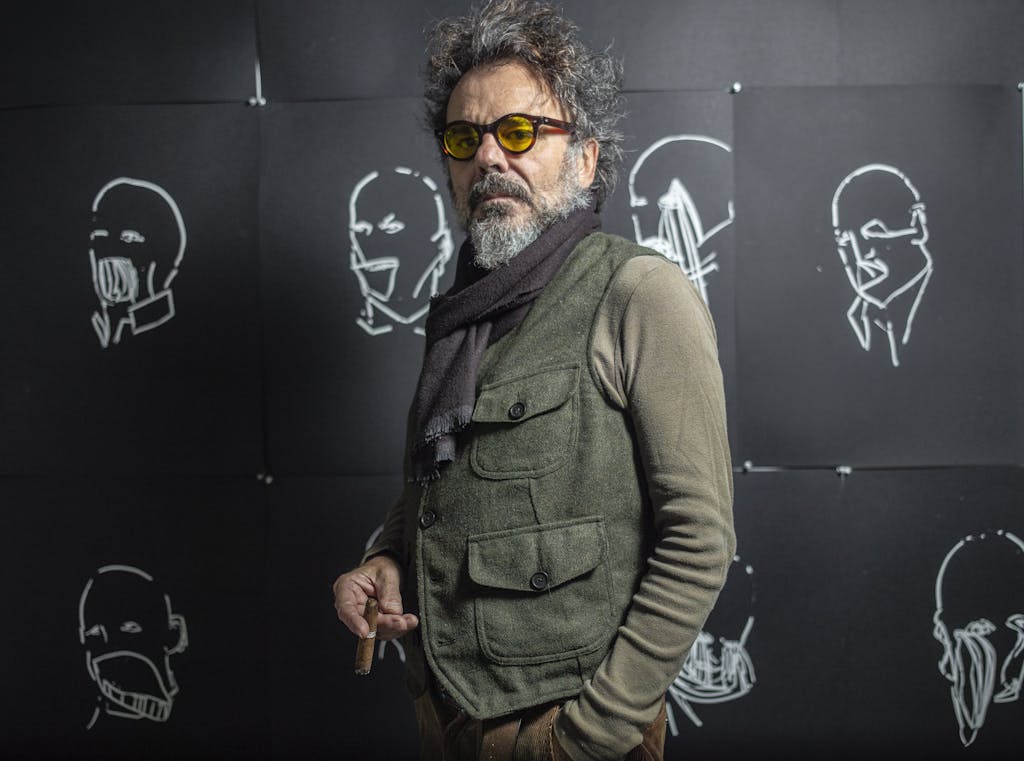BERNARDI ROIG AT MUSEO ARQUEOLÓGICO NACIONAL, MADRID, SPAIN
CAPS [Y] BOUS. EL TERCER CUERNO, 22 JAN – 25 MAY 2025

"Caps [y] Bous: El tercer cuerno" by Spanish artist Bernardi Roig (b. 1965, Palma de Mallorca) will feature three large-scale installations displayed in the Patio Norte, Patio Sur, and the Jardín de las Arqueólogas, among other spaces, at the Museo Arqueológico Nacional in Madrid, Spain.
Early March 1895. Son Corró estate, Costitx, Mallorca.
A farmer, exhausted from hard work, suggests to his foreman that they move some large rocks to expand the fields and get more from the land. By evening, after moving the first rocks and digging part of the area, the hoe strikes something metallic, and a pair of impressive horns appear. It was then that the farmer said the famous words: "Hem arribat a l'infern!" [We have arrived in hell!].
That metallic sound, caused by the hoe hitting the object, is the origin of "Caps [y] Bous" (Heads [and] Bulls). The third horn. This third horn, which in this case is golden, took 130 years to form. It's where the gaze has settled, from the first strike against the metal to today.
The Bous de Costitx (Bulls of Costitx) had been gone for 2,500 years, even though they had once existed: worshipped, protected, symbolised, and even buried. They represented fears, defeats, and hallucinations, but they never had a real body. Without a torso or limbs, they were hung on walls, posts, or placed on columns. One version of these bulls can be seen in the North Courtyard of the Museum, suspended between blocks of light that emerge from an infinite tower—or maybe a reversed lighthouse—that shines its own inner light. The bull's head embedded in this white space is a symbol of a silent, exhausted masculinity: more like a vibration with no real sound than a roar. The tower holding the bull's head with the third horn is impressive, but it blends into the whiteness and lightness of late modernity, in conversation with the heavy stone elements it touches: the soul’s tower, the Pozo Moro funerary monument, the Iberian ram’s head, or the headless seated lady.
"Caps [y] Bous. El tercer cuerno" (Caps [y] Bous. The Third Horn) is a metaphor that deepens the truth of the found object, revealing what grows on it after being museumised and viewed by so many people. From the excavations to the display cases and pedestals, from its original magical, practical, or religious purpose—but never aesthetic—to how we see it today. All objects in the Museo Arqueólogico Nacional acquire an invisible third horn as they lose their original function. Their meaning settles, and the past unfolds, becoming a sensitive document for the eyes. It’s at this point that the precise form, now without its original use, can exist for itself and open up the possibility of new meanings.
Opening 21 January 2025, 7 pm
Orgnanised by Ministerio de Cultura and Museo Arqueológico Nacional
Collaborators: Insitut d'Estudis Baleàrics, Consell de Mallorca, Ajuntament de Palma, Es Baluard Museu, Polivas.
Portrait by Bruno Daureo (2024)